Qiyuan, Dongshan First Park-Suzhou 3rd (1)
★ Tourist location: Qiyuan of Suzhou Dongshan Scenic Area
Although I booked accommodation in Xishan for two nights, I thought that staying in Xishan for one day would be enough, so I turned left at the fork of the road and headed for Dongshan.
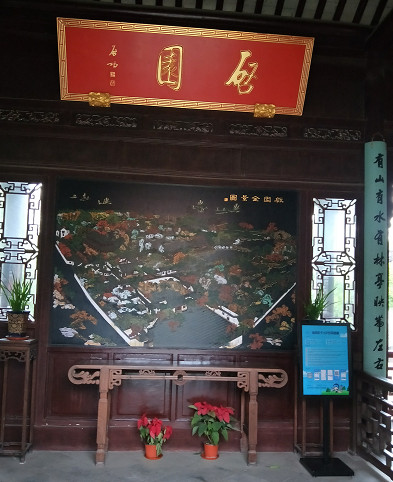
Qiyuan, commonly known as Xijia Garden, is the private garden of Xi Qisun, a wealthy businessman in Dongshan. It was built to commemorate his ancestor Xi Qiyu who once welcomed Emperor Kangxi here. At that time, it cost 100,000 silver dollars, which should be regarded as a huge sum. Later, it changed its name to Qiyuan because in the late 1940s, the owner of the park, Xu Zixing, was also known as Jie Qi, so he changed his current name.
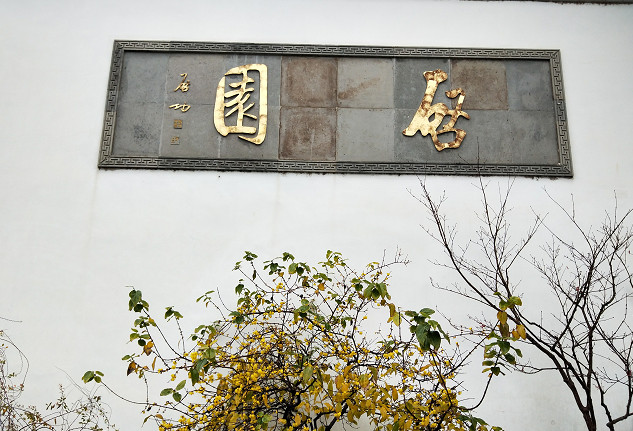
In fact, it is a group of Suzhou gardens. Although it claims to cover an area of 50 acres, the area for tourists to visit is far from that large. The entire garden adheres to the small and exquisite characteristics of Suzhou gardens. It is known as Taihu Landscape Garden because of the spirit of connecting 36,000 hectares of Taihu Lake. Borrowing the lake to enter the park, the momentum of the park has been improved several levels.
The furnishings of the visitor center are also very classical. It is a small room with tables and chairs in the Ming and Qing Dynasties style. Landscape paintings are hung on the walls. It is a small attraction in Qiyuan.

The plaque with the word "Qiyuan" on the gate is the work of a famous calligrapher. Entering the gate is a "Panorama of Qiyuan", but of course it is not as clean as the guide map. The courtyard is not big, but there are rockery rocks and streams. There is also a bonsai in front of the rockery, and the flowers are placed in the form of rings. There are also stairs to climb on the rockery side, lush green plants next to it, and the hidden Moon Cave Gate can also lead to the scenic spot.

We went up the mountain and went downstairs. After inexplicably turning back to the patio from the Yuedong Gate, we decided to visit the Liu Yi Courtyard on the left as planned. The whole courtyard is a bit similar to a garden within a garden. It is located in the corner of Qiyuan and consists of Baocuixuan, Liu Yiting, Liu Yijing, etc.
Baocuixuan is adjacent to the courtyard, and you can have a panoramic view of the entire courtyard. On the other side, you can overlook Liu Yi's courtyard, and the corridor leads directly to Liu Yiting.

Liu Yijing is one of the three treasures of Qiyuan. It originated from the mythical story "The Legend of Liu Yi". It is said that this was a relic of that time. Legend has it that Liu Yi once tied a white horse here and entered and exited the Dragon Palace from here. Although Taihu Lake does flow through the Yangtze River to the East China Sea, choosing the entrance to the Dragon Palace here seems a bit far-fetched. Moreover, this well is not big, so it is really inconvenient to enter and exit from here from the Dragon Palace. But if more people say it, people will believe it or be willing to believe it, right? There is a stone wall next to Taihu Lake. According to legend, it is the place where Liu Yi knocked on the wall to inquire. The stone tablet beside the well was inscribed by Wang Ao, a scholar in the fifth year of Zhengde in the Ming Dynasty. Therefore, Liu Yijing should be regarded as an old thing from the Ming Dynasty.

The Simian Building has the meaning of forming peaks on the sides of the ridge. When viewed from the front, it seems to be a platform, but when viewed from the back, it becomes a building. On the left is a pavilion, and on the right is a pavilion, so it is also known as the Simian Building. Coming out of Liu Yi's Courtyard, returning to the patio at the gate, and entering the main scenic area from the Yuedong Gate. The layout here not only inherits the exquisiteness of Suzhou gardens, but also looks majestic because it takes advantage of Taihu Lake.

Jing Lake is a lake in the garden, named because the water is clear and calm as a mirror. Rock rocks are stacked around the pool. Because it is close to Taihu Lake, the stone used to build the rockery is undoubtedly Taihu Lake stone. In fact, there are river courses on three sides of Jing Lake, and Jing Lake is connected to Taihu Lake through river courses.

The main buildings in the park are all built along the lake. The Cuiwei Pavilion is the first building located at the entrance. There is a rectangular pavilion in the middle, connected by promenades on both sides. Standing on the pavilion, you can see the entire Jing Lake and Taihu Lake further away. Jianhu Hall is at the end of the corridor. It should be Jinghu Lake.

We chose to tour along the left side. The first group of buildings on the lake was the Reading Pavilion. It is said to be reading the waves, but I personally think that as the trees grow taller, this is not a good place to see the waves of Taihu Lake, but you can have a panoramic view of the Jing Lake. However, we have not entered the current Reading Pavilion because it sells goods.

Rongchun Hall is a wooden hall building in the Qing Dynasty. The name of the garden is derived from the meaning of "Melting Spring Spring" in Du Mu's Afang Palace's poem. Pictures of the scenery of the garden are hung inside. On the pillar in front of the hall is Yang Wanli's famous lotus poem "The lotus leaves connect the sky are infinitely green, and the lotus flowers reflect the sun are particularly red". It can be seen that this hall is a good place to enjoy lotus flowers in summer.

The layout of Tingyuzhai is very simple. The day we chose to travel was very suitable for the occasion, and the sky drizzled from time to time. However, when I listened carefully, I didn't hear any sense of rhyme, which shows that we are not literati.

Jinghu Tower is the location of the costume fantasy TV series "Water Moon Cave". In the play, the lobby of Yujian Villa is Jinghu Hall. The main building of the whole park has two floors on all sides, with double eaves and angled corners, making it look elegant and dignified. Unfortunately, we were renovating on the day we visited, so we could only see the exterior and couldn't enter.

The three big trees on the side are covered with red silk, which is very eye-catching. I looked around and saw no temples. I didn't know what the story of making a wish was in it.
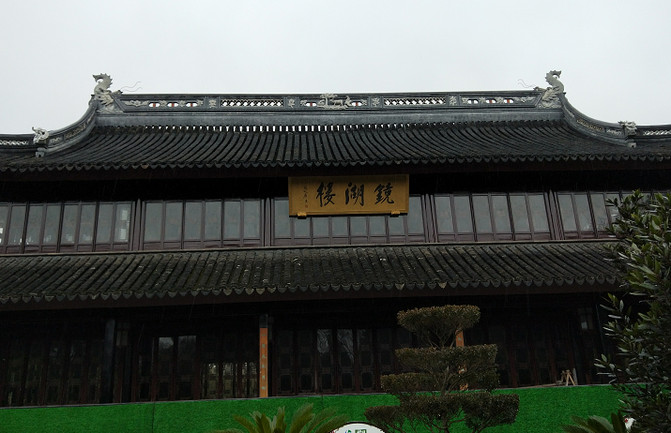
Walking along the left side to the end is a river that is not too wide. The trees are lush and the grass is deep on both sides, and with some yellow and red mixed in winter, the whole color is very rich. The river meanders around Jing Lake. When it reaches Taihu Lake, it turns and continues to flow to the right. There is a group of rockery beside Taihu Lake. Although there are no famous attractions, we all think that at least a few animals are pictographic.

There is an antique stone arch bridge on the lake side. The iron gate on the side of the bridge is closed and it is impossible to climb the bridge. When you turn back, you will find the famous Imperial Pier, which is also one of the three treasures of the town and garden.

Royal Wharf The place where Emperor Kangxi visited Dongshan when he disembarked and landed. After hundreds of years, most of the original objects have been lost. A pair of stone lions who tied the dragon boat at that time still crouched in front of the dock faithfully. In the TV series "Water Moon Cave", the tomb of Tong Bo's parents is here.
The archway is very grand, with the four words "glowing brightly". It is said that it was given by Kangxi. At that time, Emperor Kangxi established a museum for Dongshan and compiled the title of "Qing Dynasty Unification Annals".

The long embankment pavilion extends to Taihu Lake, which is a good place to enjoy the beautiful scenery of Taihu Lake. If the sun is rising or the sun is setting, it will be more beautiful. Raindrops fell densely on the lake, creating circles of dense ripples. The name of the pavilion is "Chong Er" and it is written by Kangxi. I don't know what the meaning is.

The floating emerald pavilion faces the lake. Standing on the platform in front of the pavilion and looking back at the Royal Wharf, the pavilion embankment and pavilion look particularly elegant and slender. The lake embankment in the distance has smooth lines and green. Opposite the pavilion is a green bridge, which is very classical in style. There are lush green trees on both sides of the river bank, all of which are evergreen trees. The word green is very suitable for the scenery. On the other side of the river is a golden pavilion, which is small and exquisite.

There is a large-scale cruise ship terminal south of Taihu Lake. It may be due to the off-season, or perhaps due to today's poor weather conditions, the terminal is closed.

Yibo Bridge spans the river, and the river flows from here to Taihu Lake. There is an Yinchun Bridge at the corner, leading to the peninsula in the center of the river. There are two pavilions on the island, the Xiaodan Pavilion and the Silver Picking Pavilion. There is nothing outstanding about it. However, one of the three treasures, the ancient bayberry tree, is located on this inconspicuous peninsula.
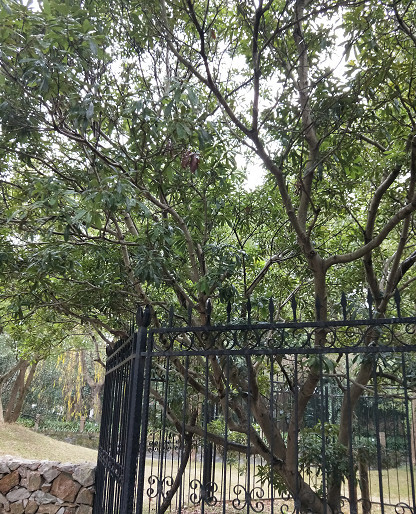
If it weren't for a monument erected, we wouldn't have thought that this bayberry tree was actually one of the three treasures of Qiyuan, because the plant is not very big. Of course, what others call becoming a treasure is inseparable from the blessing of Emperor Kangxi. In 1699, Kangxi walked to the foot of the slope and saw a bayberry tree. There were no bayberry trees in the north, so he was very curious: "The leaves don't look like poplars, and the branches don't look like weeping willows. What tree is it?" Song Luo of the Jiangsu patrol government who was accompanying him said: "This is a specialty of Jiangnan, called bayberry trees." There were several bayberry trees at that time, but now there is only one left, and the other bayberry trees have long died.

If it weren't for the vast Taihu Lake in the east, Qiyuan would be just one of Suzhou gardens. Judging from the layout of the garden, although there are occasional unique strokes, it is difficult to call it a famous garden. Only by taking advantage of Taihu Lake can we gain a place in Suzhou, which is famous for its gardens.
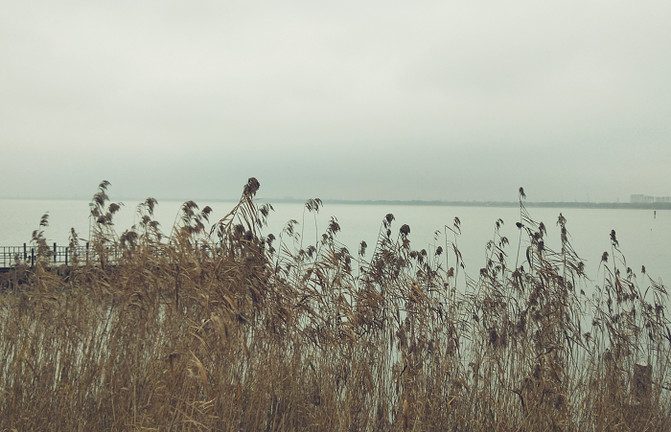

With 36,000 waves in the vast expanse, Taihu Lake takes advantage of the scenery to name its park.
The oblique wind gathers the line to find new sentences, and the drizzle turns into silk and drops old marks.
--Seven Wonders






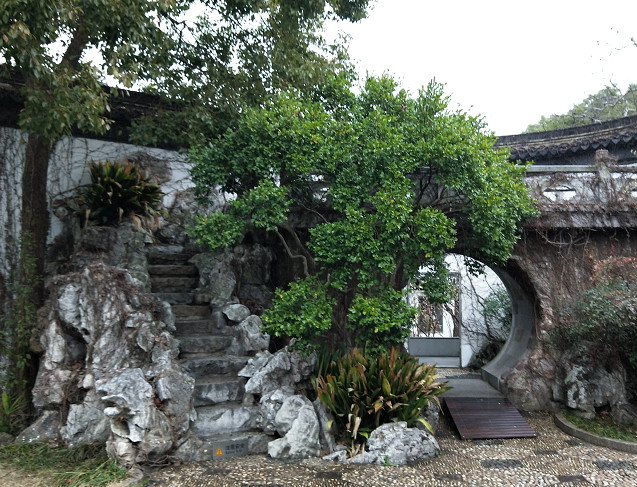


















Previous Article:Double Festival Tour to avoid the peak crowd
Next Article:Tianchi and Huashan, one mountain spans two scenery
